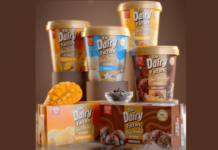New Delhi, January 17, 2023: As brand stories go, Amul’s is remarkable. Not only is it truly unique in a world of similar sales propositions with pretences to uniqueness, it is a fine example of public sector success, an ode in its own right to cooperative commerce. As a brand, its hold on India’s bulk market for dairy products can be explained by its consumer appeal as much as initial state backing, an unbeatable supply-chain lead and the legacy of protection under a licence raj. This week saw a change at the top of Gujarat Cooperative Milk Marketing Federation (GCMMF), which owns and markets the Amul range. Jayen Mehta took charge as interim managing director from R.S. Sodhi, a former marketing chief who led GCMMF from a four-digit sales turnover in 2010-11 to over ₹46,480 crore in 2021-22. Mehta is an old hand at Amul, like Sodhi, whose early career was under Verghese Kurien, prime mover of India’s ‘white revolution’. What began as a drive for milk sufficiency gave us one of our best loved brands. Today, more Indians have a stake in Amul doing even better than just its direct stakeholders—its vast network of dairy farmers, i.e., whose milk it procures at prices it was set up to maximize—even if only to prove that a business model needn’t always be profit-motivated.
Of various ways to snuggle a brand into consumer minds for its recall to spell purchase preferences, Amul’s formula remains hard to match. Once the country had enough milk, thanks to Kurien’s leadership of a movement to enlist farmers, GCMMF’s cooperative agenda meant its approach was driven by the liquidity stimulus of milk collections. Faced with a glut of raw milk supplies, it had to process the excess for more copious consumption, which made it launch one novel item after another to open up new categories that could gain scale if promoted well. To that end, Sodhi’s tenure saw GCMMF reach out across diverse eatables and drinkables. Once demand for packaged staples like milk, butter, ghee, cream and curd was satisfied to the brim, it went for discretionary stuff like ice-cream, even as it tickled an impressive width of tastes with cheese variants. The wide choice of cheese-spread flavours that Amul offers thus reflects a sales-growth imperative to assure millions of milk producers income hikes that can cover rising costs of livestock farming. On offer-basket diversity, Amul’s private-sector rivals can scarcely keep up. Even post-1991 dairy entrants with deep pockets have mostly been unable to take it on. Apart from a few segments that are hotly contested and allow carve-ups by coverage area because of cold-chain constraints (Unilever leads ice-cream), Amul’s competitors must content themselves with thin slices of all-India sales. If its near monopoly of Indian butter volumes does not invite charges of acting like a market bully, credit is also due to the charm of its long-playing ad campaign, especially its cheeky takes on current events. Ever since the days of Kurien, though, the key factor in Amul’s success has been GCMMF’s autonomy from the state. This aspect of its model must be upheld according to the reports published in livemin.com.
Recent test launches by Amul include packs of high-protein buttermilk, but its long-range market strategy needs to address health far more squarely as it evolves further. Emergent trends in cardiac talk suggest it must join rather than duck India’s conversation on dairy fats, even as it studies links drawn between climate change and dairy farms by sector critics. Amul’s conscience and pitch as a do-gooder brand gave it a good run. It must keep that legacy going.
Of various ways to snuggle a brand into consumer minds for its recall to spell purchase preferences, Amul’s formula remains hard to match. Once the country had enough milk, thanks to Kurien’s leadership of a movement to enlist farmers, GCMMF’s cooperative agenda meant its approach was driven by the liquidity stimulus of milk collections. Faced with a glut of raw milk supplies, it had to process the excess for more copious consumption, which made it launch one novel item after another to open up new categories that could gain scale if promoted well. To that end, Sodhi’s tenure saw GCMMF reach out across diverse eatables and drinkables. Once demand for packaged staples like milk, butter, ghee, cream and curd was satisfied to the brim, it went for discretionary stuff like ice-cream, even as it tickled an impressive width of tastes with cheese variants. The wide choice of cheese-spread flavours that Amul offers thus reflects a sales-growth imperative to assure millions of milk producers income hikes that can cover rising costs of livestock farming. On offer-basket diversity, Amul’s private-sector rivals can scarcely keep up. Even post-1991 dairy entrants with deep pockets have mostly been unable to take it on. Apart from a few segments that are hotly contested and allow carve-ups by coverage area because of cold-chain constraints (Unilever leads ice-cream), Amul’s competitors must content themselves with thin slices of all-India sales. If its near monopoly of Indian butter volumes does not invite charges of acting like a market bully, credit is also due to the charm of its long-playing ad campaign, especially its cheeky takes on current events. Ever since the days of Kurien, though, the key factor in Amul’s success has been GCMMF’s autonomy from the state. This aspect of its model must be upheld.



































